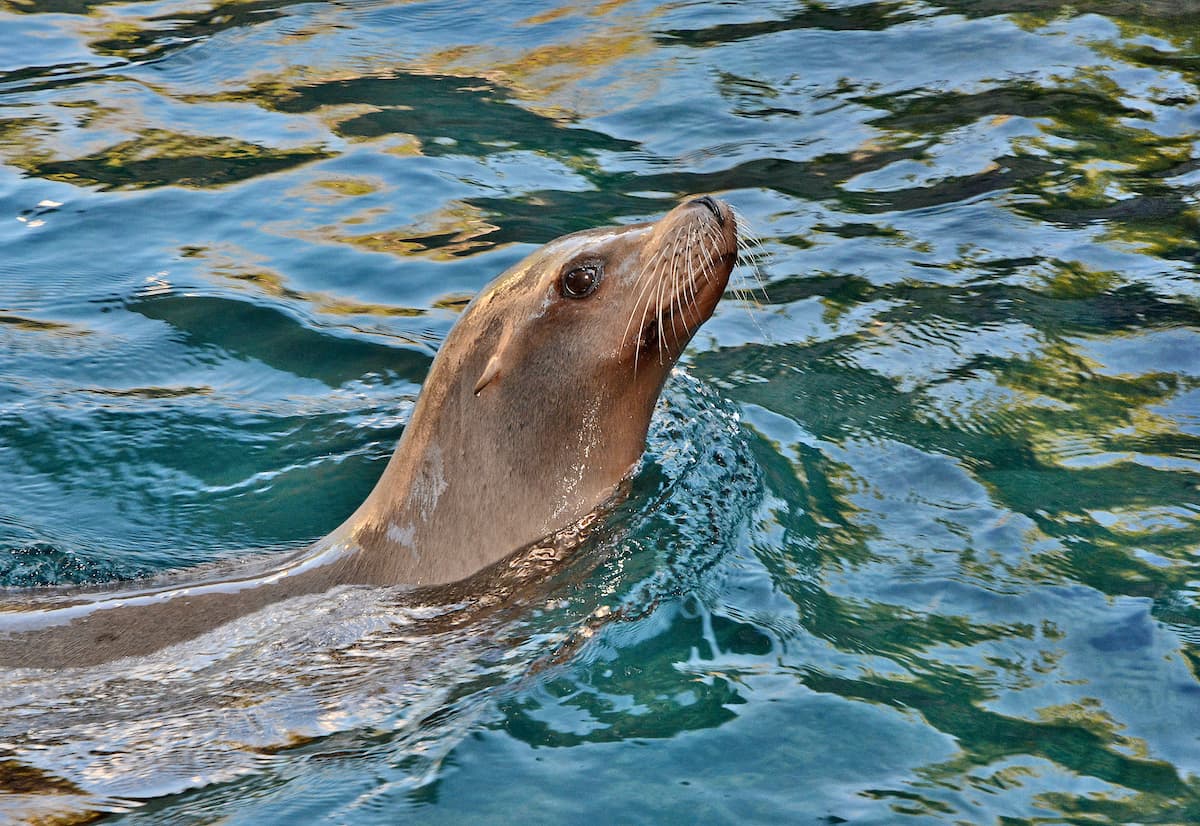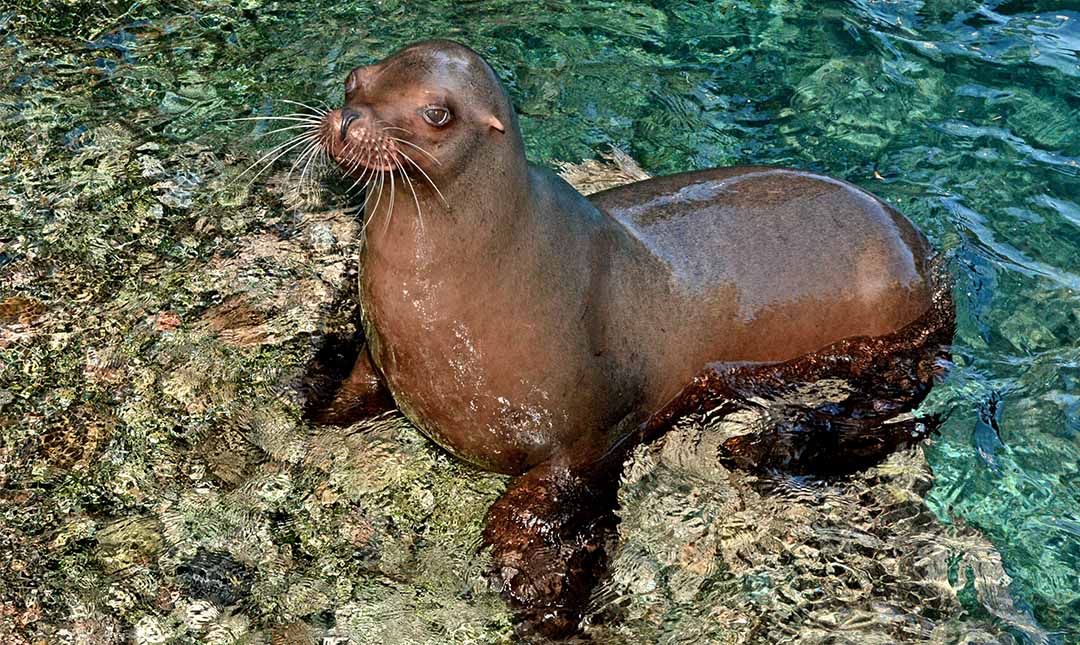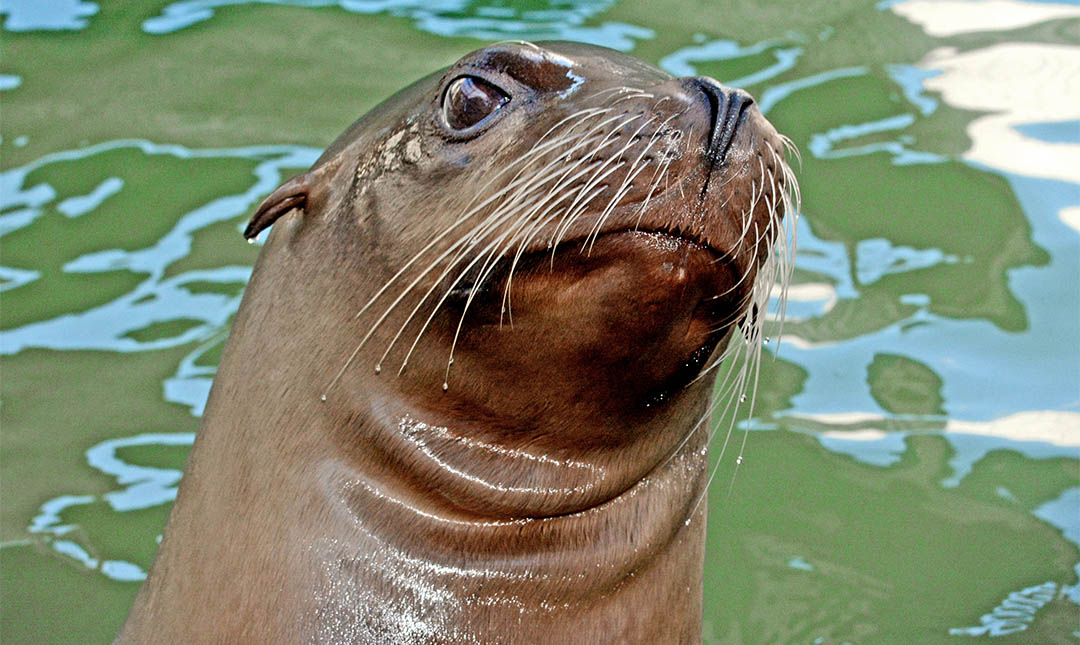About
These agile swimmers use their long front flippers to propel them through the water at speeds of 25 to 35 miles per hour while using their back flippers as rudders to steer. A California sea lion’s average dive is 250 feet deep—but can be more than 1,000 feet deep—and can last for about 20 minutes. During a deep dive, the heart rate and metabolism slow down, blood flow to the skin surface is restricted to retain heat around vital organs, and the sea lion’s ears, throat, and nostrils close tight. Their torpedo-shaped bodies help them glide through the water using their blubber for energy, buoyancy, and insulation, and their whiskers (called vibrissae) rotate to detect fish swimming by. Large eyes aid in seeking out underwater prey in dim light. When sea lions are back on land and at rest, their nostrils remain closed and must be opened to breathe. California sea lions are members of the “eared seal” family and have external ear flaps.
Extremely vocal and social, they lie next to or even on top of each other on land, rotating their hind flippers under their bodies to walk around. In the water, they often form raft-like groups and float with their flippers sticking out of the water to cool off. Appearing to play, they “body surf” on swells near shore and “porpoise” by leaping out of the water and entering headfirst. Sea lions reproduce on land at rookeries. Mating takes place in the surf or wet sand, and then males stake out and continuously guard a territory on rocks or the shore where one pup is born after a gestation of about 11 months. The mother’s milk is high in fat, allowing the pups to quickly gain weight. At two to three weeks, pups are ready for their first swimming lesson. Baby sea lions may stay with their mothers at sea for up to one year.
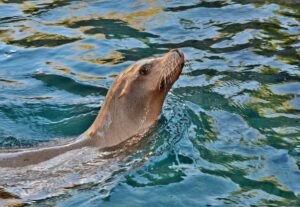
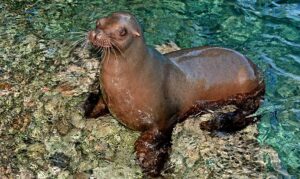
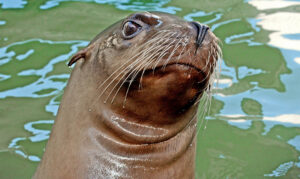
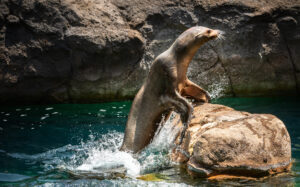
Habitat
California sea lions live in the Pacific Ocean along the west coast of North America, from British Columbia to central Mexico. They generally stay within 10 miles of shore.
Diet
These marine mammals are carnivorous, eating fish, squid, crabs, and clams. Some of their favorites include sardines, anchovies, hake, mackerel, and octopus.
Physical Characteristics
Male sea lions are significantly larger than females, with a body length of up to eight feet and weighing between 600 and 1,000 pounds. Females have a body length up to six feet but weigh closer to 220 pounds. Lifespans in the wild are 15 to 20 years, but in human care can be up to 25 to 30 years.
LOCATION WITHIN THE ZOO
You’ll find this animal in Sea Life Cliffs near the front of the Zoo. See Zoo Map.

